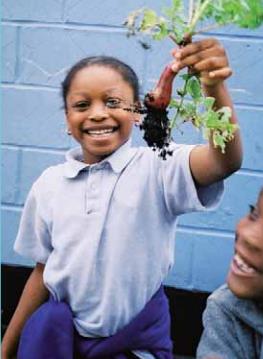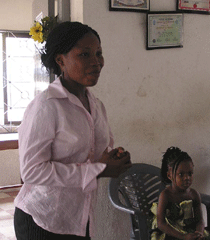By Sue Blythe
It’s the year 2050 – the 50th Anniversary of the Earth Charter. A holographic image of the Earth appears in the center of the crowded stadium. It sprouts a green shoot that grows quickly into a sapling, and then a young tree. It seems to be alive with images. You zoom in with your hand-held and see that each image is the beginning of a story. Panning around the trunk of the tree from ground level to branches, you realize that you’re looking at the sixteen principles of the Earth Charter, illuminated with the experiences of thousands of real people. Together they show how the human family has brought the vision of the Earth Charter closer to reality. You’re looking through 50 years of arts, sciences and service. You search in 2014, looking for that project you began all those years ago …
Illuminating the Earth Charter
Illuminating the Earth Charter is the centerpiece of the FutureFlash! Project, an educational program to engage young people – and those who care about their future – in meaningful activities for a sustainable, just and peaceful world.
The purpose of Illuminating the Earth Charter is to show, year by year, how people are bringing the vision of a sustainable world into reality. What you do today makes a difference for the generations that follow you. When they look back on this time, what will they see?
We are at the beginning stage of creating the exquisitely complex hologram envisioned for the 50th Anniversary of the Earth Charter in the year 2050. The process is taking shape. The product is in its infancy.
In 2014 we will continue developing the web site with art and activities from people of all ages. We invite you to help show the many ways the Earth Charter is coming to life in homes, schools and communities around the world.
Take a look at three examples, below. Then follow the Guide for Illuminating the Earth Charter.

Illuminating the Earth Charter with Westwood Middle School
Art students illustrated a simple version of the Earth Charter in Marihelen Wheeler’s classes.

Illuminating the Earth Charter with Trilogy School.
Middle school students planned and carried out four service projects on Earth Charter themes of Life, Ecology, Justice and Peace.

Illuminating the Earth Charter with the Interfaith Climate Group
In a series of monthly workshops, people matched the actions of individuals and groups to principles of the Earth Charter. Four interfaith gatherings are planned in 2014 to build community in a changing climate, using the Earth Charter as an organizing tool.
How are you bringing the Earth Charter to life? We want your story! Email us at info@futureflashproject.org . Ask for your Guide for Illuminating the Earth Charter.
FutureFlash! Project is a nonprofit organization, sponsored by EarthAction Network. They are seeking educators, web and business developers to help build the full online educational program for school and community groups. For more information, contact Sue Blythe <sue@futureflashproject.org>.
FutureFlash! Project
www.futureflashproject.org



 “I aspire to share my experience, and indulge youth to raise more awareness and participate systematically and effectively in promoting environmental work, sustainability- the future we want and causes that must be addressed sooner than ever before with creative and innovative ideas.” Simran Vedvyas
“I aspire to share my experience, and indulge youth to raise more awareness and participate systematically and effectively in promoting environmental work, sustainability- the future we want and causes that must be addressed sooner than ever before with creative and innovative ideas.” Simran Vedvyas “We are following our own path to true and lasting peace which we believe starts within our own hearts. To truly transform our communities, our countries and the world is to begin transforming ourselves which is the way to sustainable unity within our world. We need to strive to prepare the ground for exceptional ideas and to inspire to concrete action, enriched by the critical voices of idealistic and courageous young people.” Princess Ogechi Ukaga,Chapter Leader Children of the Earth Nigeria
“We are following our own path to true and lasting peace which we believe starts within our own hearts. To truly transform our communities, our countries and the world is to begin transforming ourselves which is the way to sustainable unity within our world. We need to strive to prepare the ground for exceptional ideas and to inspire to concrete action, enriched by the critical voices of idealistic and courageous young people.” Princess Ogechi Ukaga,Chapter Leader Children of the Earth Nigeria